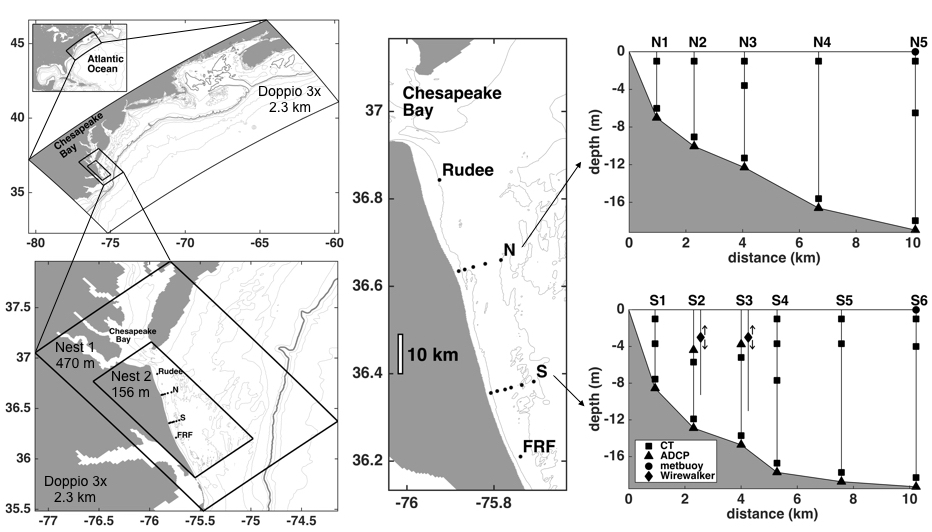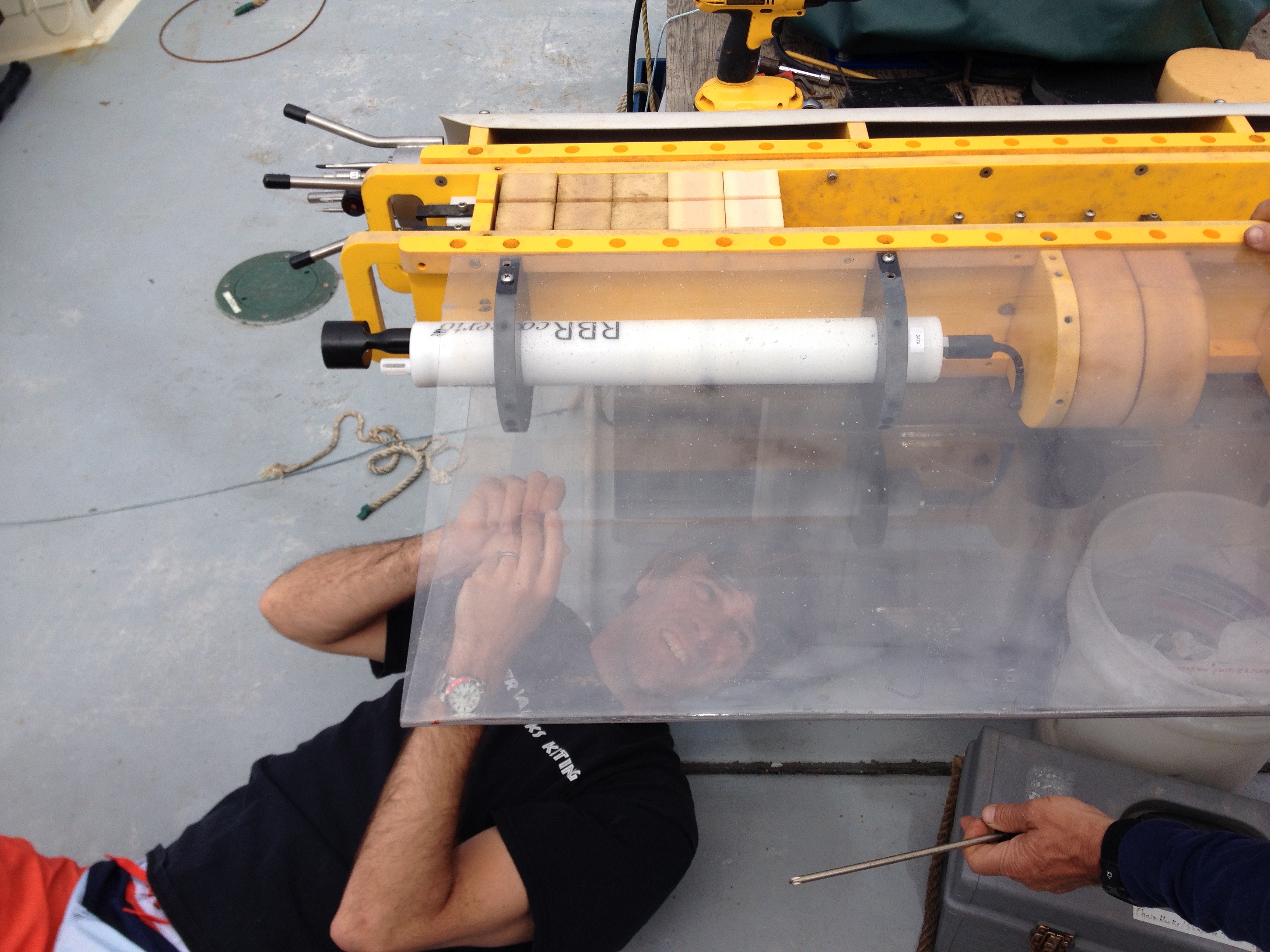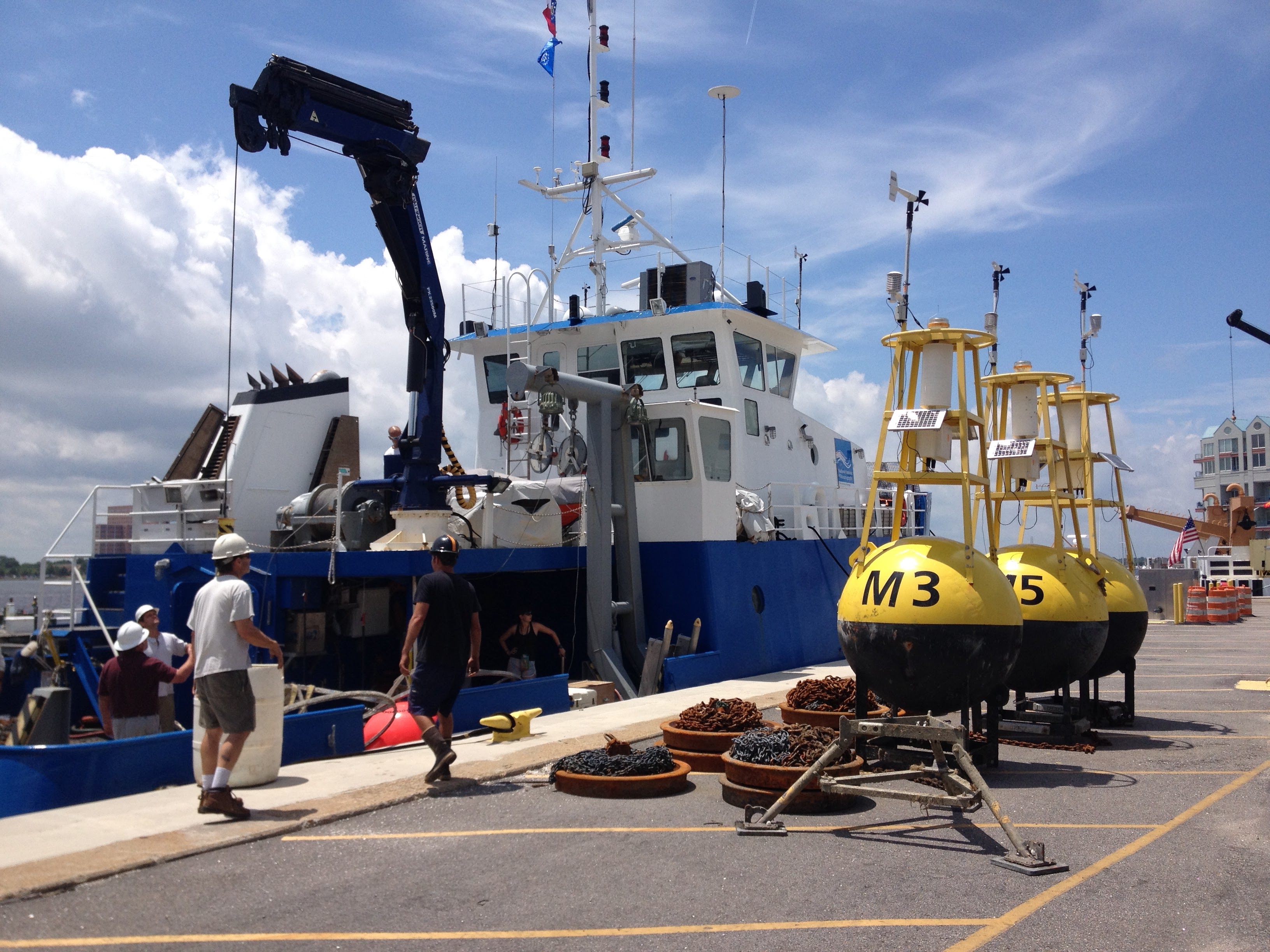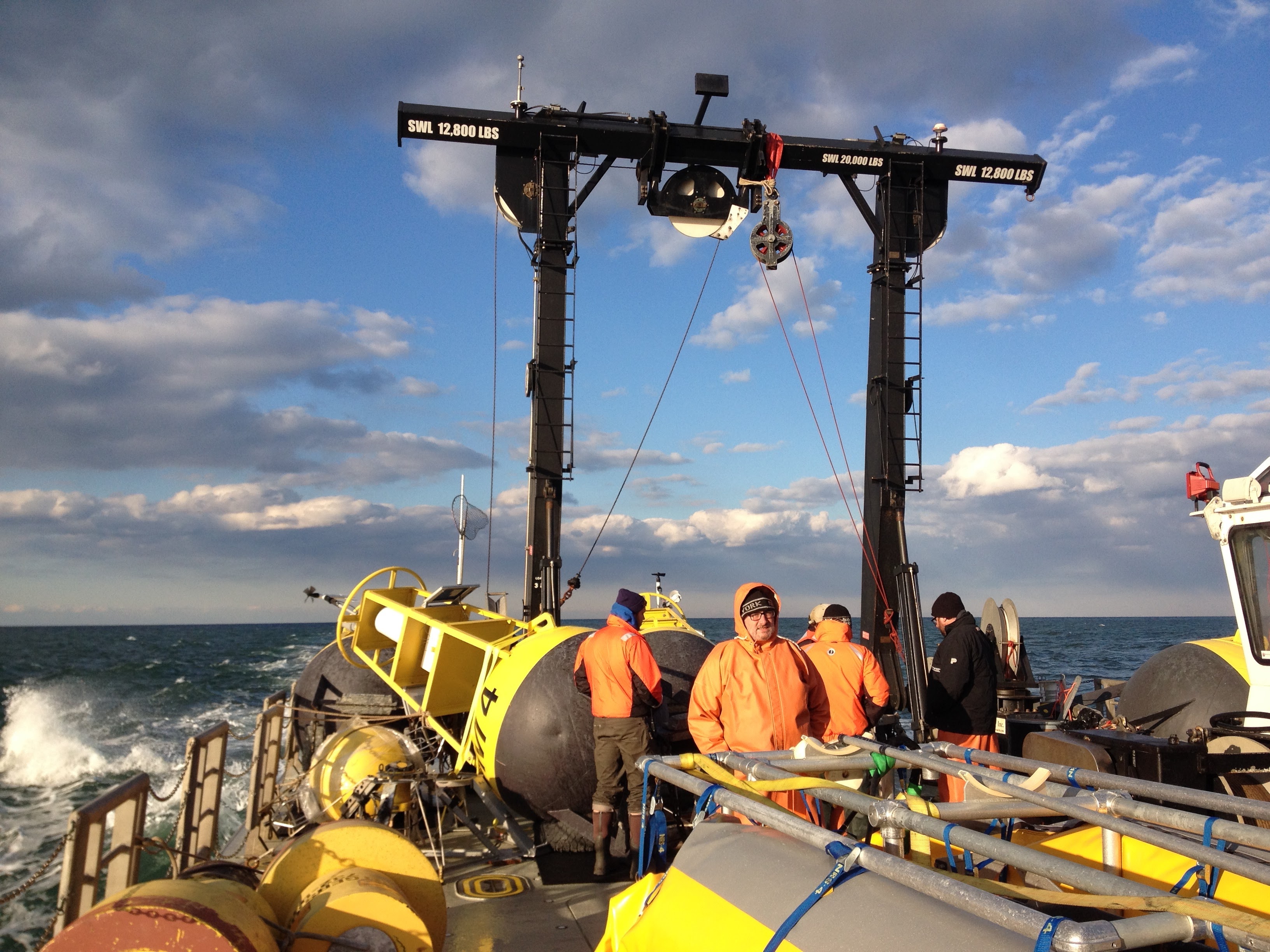Circulation and Mixing in a Coastally Trapped River Plume
PIs: Robert J Chant (RUTGERS), John Wilkin (RUTGERS), Malcolm Scully (WHOI), Nick Nidzieko (UCSB)
Postdoc: Piero Mazzini
This large project was funded by the National Science Foundation (NSF grant OCE- 0238957), which involved a major field work to survey the Chesapeake Bay plume, off the coasts of Virginia and North Carolina. The primary objectives were:
- to quantify mixing within the nose region, the interior, and the offshore edge of the plume during downwelling conditions;
- to obtain detailed measurements of plume propagation speeds and the structure of the circulation behind the nose in a buoyant coastal current under downwelling favorable winds;
- to identify the dominant mechanisms responsible for mixing and entrainment of salt into the coastal current;
- to document the dominant dynamic balances that govern plume propagation during downwelling conditions under a range of wind forcing.
This comprehensive field program consisted of moored, shipboard, and microstructure-AUV observations of circulation and mixing within the plume, complemented by high-resolution simulations using ROMS, which provided more comprehensive estimates of mixing, diagnostics of the dynamics of the plume, and information about the role of wind, waves and internal shear in driving plume mixing.
High-resolution numerical model output from Nest 2 domain (see figure below) can be found HERE.

Map of model domain and mooring locations.
R/V Savannah and the meteorological buoys used in the project

Dr. Malcolm Scully is attaching an oceanographic sensor to the Wirewalker
Dr. Bob Chant deploying the Wirewalker
Moorings and buoys deployment


